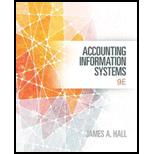
In 1989, Robert Smith opened a small fruit and vegetable market in Bethlehem, Pennsylvania. Originally, Smith sold only produced grown on his family farm and orchard. As the market’s popularity grew, however, he added bread, canned goods, fresh meats, and a limited supply of frozen goods. Today, Smith’s market is a full range farmers’ market with a strong local customer base. Indeed, the market’s reputation for low prices and high-quality draws customers from other Pennsylvania cities and even from the neighboring state of New Jersey. Currently, Smith’s market has 40 employees. These include sales staff, shelf stockers, farm laborers, shift supervisors, and clerical staff. Recently, Smith has noticed a decline in profits and sales, while his purchases of products for resale have continued to rise. Although the company does not prepare audited financial statements, Robert Smith has commissioned your public accounting firm to assess his company’s sales procedures and controls. Smith’s market revenue cycle procedures are described in the following paragraphs:
Revenue Cycle
Customers push their shopping carts to the checkout register where a clerk processes the sale. The market has four registers, but they are not dedicated to specific sales clerks because the clerks play many roles in the day-to-day operations. In addition to checking out customers, sales clerks will stock shelves, unload delivery trucks, or perform other tasks as demand in various areas rises and falls throughout the day. This fluid-work demand makes the assignment of clerks to specific registers impractical.
At the beginning of the shift, the shift supervisor collects four cash register drawers from the treasury clerk in an office in the back of the market. The drawers contain $100 each in small bills (known as float) to enable the clerks to make change. The supervisor signs a log indicating that he has taken custody of the float and places the drawers into the respective cash registers.
Sales to customers are for cash, check, or credit card only. Credit card sales are performed in the usual way.
The clerk swipes the card and obtains online approval from the card issuer at the time of sale. The customer then signs the credit card voucher, which the clerk places in a special compartment of the cash register drawer. The customer receives a receipt for the purchase and a copy of the credit card voucher.
For payments by check, the clerk requires the customer to present a valid driver’s license. The license number is added to the check and the check is matched against a “black” list of customers who have previously passed bad checks. If the customer is not on the list, the check is accepted for payment and placed in the cash register drawer. The clerk then gives the customer a receipt.
The majority of sales are for cash. The clerk receives the cash from the customer, makes change, and issues a receipt for the purchase.
At the end of the shift, the supervisor returns the cash register drawers containing the cash, checks, and credit cards receipts to the treasury clerk and signs a log that he has handed in the cash drawers. The clerk later counts the cash and credit card sales. Using a stand-alone PC, he records the total sales amounts in the sales journal and the general ledger sales and cash accounts. The treasury clerk then prepares a deposit slip and delivers the cash, checks, and credit card vouchers to the local branch of the bank two blocks away from the market.
Required
- a. Create a data flow diagram of the current system.
- b. Create a system flowchart of the existing system.
- c. Analyze the physical internal control weaknesses in the system. Model your response according to the six categories of physical control activities specified in the COSO internal control model.
- d. Describe the IT controls that should be in place in this system.
Trending nowThis is a popular solution!

Chapter 4 Solutions
Accounting Information Systems
- What is the net profit?arrow_forwardOn January 1, 2018, Sycamore International reports net assets of $1,245,000, although machinery (with an eight-year life) having a book value of $720,000 is worth $840,000 and an unrecorded trademark is valued at $75,600. Teton Group pays $1,140,000 on that date for a 90 percent ownership in Sycamore. If the trademark is to be written off over a 15-year period, at what amount should it be reported on the consolidated statements on December 31, 2020?arrow_forwardI am looking for help with this general accounting question using proper accounting standards.arrow_forward
- Montu Consultants Corporation obtained a building, its surrounding land, and a computer system in a lump-sum purchase for $375,000. An appraisal set the value of the land at $184,500, the building at $144,000, and the computer system at $121,500. At what amount should Montu Consultants record each new asset on its books?arrow_forwardPlease provide the solution to this financial accounting question with accurate financial calculations.arrow_forwardCan you solve this general accounting problem using accurate calculation methods?arrow_forward
- Question: The balanced scorecard approach includes a) Only financial measures b) Only non-financial measures c) Both financial and non-financial measures d) Only customer measuresarrow_forwardAccurate answerarrow_forwardCan you solve this general accounting question with accurate accounting calculations?arrow_forward
- What is the difference between actual and budgeted costs?arrow_forwardHow much is samantha's disposable income ?arrow_forwardArdor Ltd. purchased a new equipment that is expected to be used in operations for 6 years for $60,000. The salvage value of the equipment after 6 years is $6,000. Assume the equipment was purchased on the first day of the fiscal year so no partial-year depreciation is needed. Using the Straight-Line Depreciation Method, what is the value of accumulated depreciation at the end of year 4?arrow_forward
 Accounting Information SystemsAccountingISBN:9781337619202Author:Hall, James A.Publisher:Cengage Learning,
Accounting Information SystemsAccountingISBN:9781337619202Author:Hall, James A.Publisher:Cengage Learning, Cornerstones of Cost Management (Cornerstones Ser...AccountingISBN:9781305970663Author:Don R. Hansen, Maryanne M. MowenPublisher:Cengage LearningBusiness Its Legal Ethical & Global EnvironmentAccountingISBN:9781305224414Author:JENNINGSPublisher:Cengage
Cornerstones of Cost Management (Cornerstones Ser...AccountingISBN:9781305970663Author:Don R. Hansen, Maryanne M. MowenPublisher:Cengage LearningBusiness Its Legal Ethical & Global EnvironmentAccountingISBN:9781305224414Author:JENNINGSPublisher:Cengage


